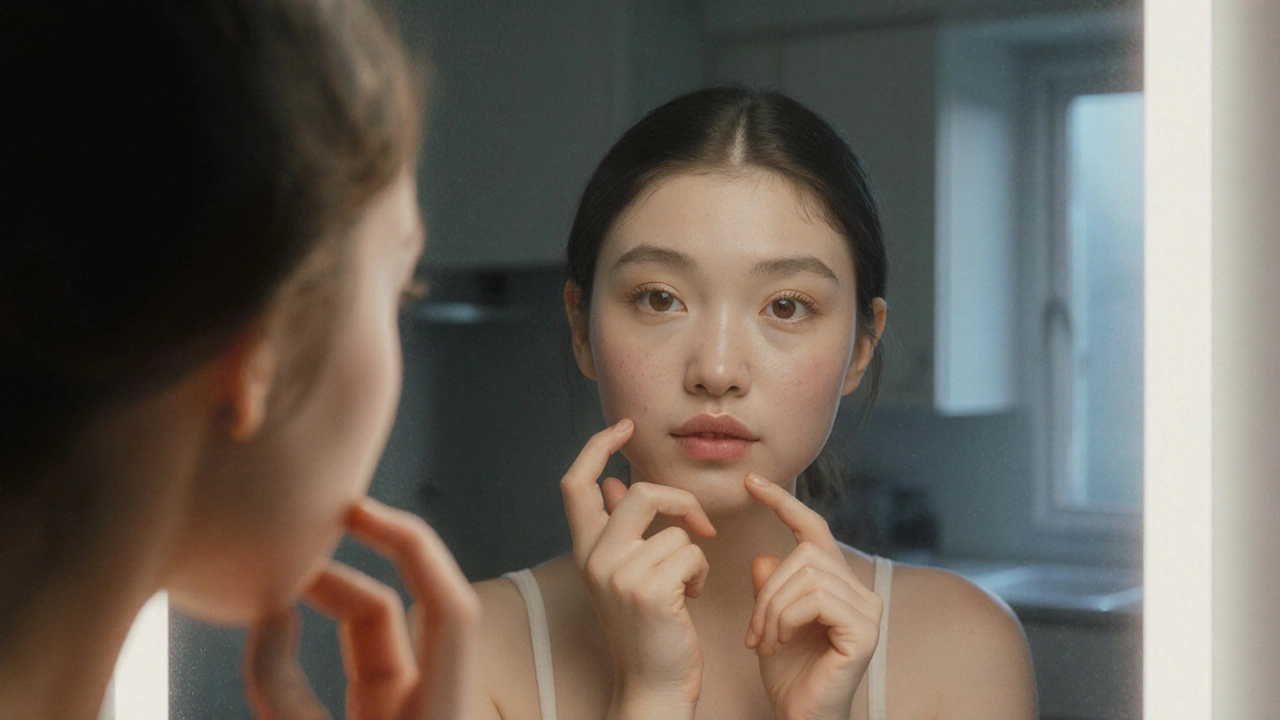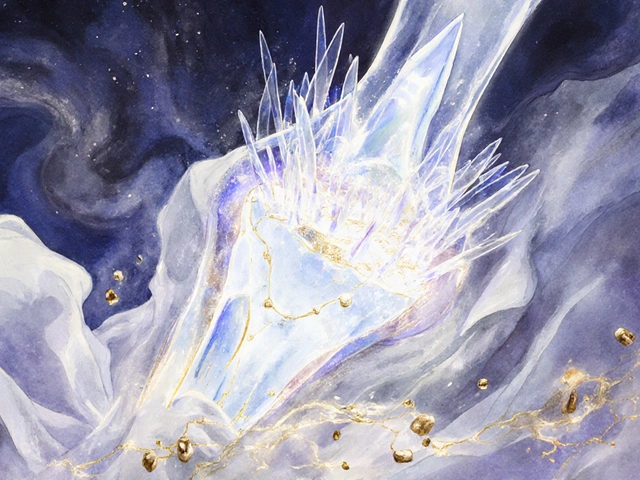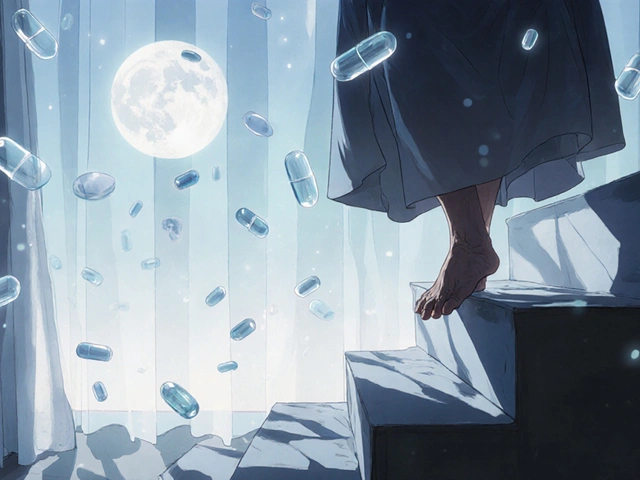
Hirsutism Treatment Effectiveness Calculator
hirsutism is a condition characterized by excess terminal hair growth in women, often affecting the face, chest, and abdomen. Around 5‑10% of women worldwide notice unwanted hair that doesn’t respond to regular shaving or waxing, and many turn to non‑prescription options after hearing mixed reports about hormonal pills.
What Exactly Is Hirsutism?
Medical experts define hirsutism as the presence of coarse, pigmented hair in areas where men typically grow hair. The root cause is usually an excess of androgens-male‑type hormones-produced by the ovaries or adrenal glands. Common triggers include polycystic ovary syndrome (Polycystic Ovary Syndrome), congenital adrenal hyperplasia, or certain medications.
Conventional Medical Options
Standard care often starts with oral contraceptives, anti‑androgen drugs like spironolactone, or topical eflornithine. These treatments can reduce hair growth, but they may cause side effects such as menstrual irregularities, breast tenderness, or dry skin. That’s why many patients ask, “Can I manage the problem without prescription drugs?”
Why People Look to Alternative Medicine
Alternative therapies appeal for three main reasons: fewer side effects, a sense of taking control, and cultural or personal beliefs about natural healing. While the scientific proof varies, several approaches have enough data to warrant a look.
Herbal Supplements and Botanical Remedies
Plants with anti‑androgenic properties have been studied in small trials. Below are the most cited options.
- Saw Palmetto-Extracts from Serenoa repens are thought to block 5‑alpha‑reductase, the enzyme that converts testosterone to the more potent dihydrotestosterone (DHT). A 2022 pilot study of 30 women reported a 15% reduction in hair thickness after three months.
- Spearmint Tea-Two daily cups lowered free testosterone by roughly 20% in a 2021 randomized trial of 45 participants with mild hirsutism.
- Licorice Root-Contains glycyrrhizin, which may inhibit adrenal androgen synthesis. One small trial showed modest improvement after eight weeks, but high doses can raise blood pressure.
- Vitamin B6-Supports hormone metabolism. Dosages of 50mg per day have helped some women reduce oily skin and hair growth.
- Zinc-A mineral that interferes with 5‑alpha‑reductase activity. A 2020 meta‑analysis found a mean decrease of 0.3mm in hair shaft diameter when supplementing 30mg daily for 12 weeks.
Acupuncture and Traditional Chinese Medicine (TCM)
Acupuncture aims to balance the body's energy flow (Qi) and has been used to treat endocrine disorders. A 2019 systematic review of eight trials reported that participants receiving acupuncture plus lifestyle advice experienced a noticeable drop in androgen levels and a softer hair texture compared with lifestyle advice alone.
Dietary and Lifestyle Adjustments
Weight loss of even 5‑10% can lower insulin resistance, which indirectly reduces androgen production. Low‑glycemic diets, rich in whole grains, legumes, and fiber, have demonstrated improvements in PCOS‑related hirsutism. Anti‑inflammatory foods like turmeric and omega‑3 fatty acids may also calm hormonal spikes.

Topical Natural Agents
Some women apply diluted essential oils (e.g., tea tree, lavender) or coffee scrubs to slow hair growth. While anecdotal evidence is abundant, rigorous studies are lacking, so results are unpredictable.
How Effective Are These Options?
Evidence quality ranges from randomized controlled trials (RCTs) for spearmint tea to case series for licorice root. Most studies involve fewer than 50 participants and last under six months, so long‑term outcomes are unclear. However, the low risk of severe adverse events makes many of these approaches worth a trial, especially when combined with standard care.
Safety, Interactions, and What to Watch For
Even natural products can interfere with prescription meds. For example, saw palmetto may enhance the effect of blood‑thinning drugs, and high‑dose licorice can raise potassium loss. Always discuss supplement plans with a healthcare provider, particularly if you’re on hormonal therapy or anticoagulants.
Integrating Alternative and Conventional Treatments
Most dermatologists and gynecologists recommend a blended plan: start with a low‑dose oral contraceptive, then add an anti‑androgenic herb if blood work shows elevated DHT. Acupuncture sessions can be scheduled in parallel to monitor hormone trends.
Practical Checklist for Patients
- Get baseline labs: total testosterone, free testosterone, DHEAS, fasting insulin.
- Choose one herbal supplement to start-preferably spearmint tea or saw palmetto-monitor side effects for 8‑12 weeks.
- Schedule an acupuncture series (6-12 sessions) if you’re comfortable with needle‑based therapy.
- Adopt a low‑glycemic, high‑fiber diet; track weight and waist circumference monthly.
- Maintain monthly follow‑up with your clinician to adjust prescription doses based on lab results.
Comparison of Common Alternative Approaches
| Therapy | Primary Benefit | Typical Onset | Key Side Effects | Evidence Strength |
|---|---|---|---|---|
| Saw Palmetto | Blocks DHT production | 3‑4 months | Rare GI upset | Moderate (small RCTs) |
| Spearmint Tea | Lowers free testosterone | 1‑2 months | None for 2‑3 cups daily | Strong (multiple RCTs) |
| Licorice Root | Reduces adrenal androgen synthesis | 2‑3 months | Elevated blood pressure, potassium loss | Weak (case series) |
| Acupuncture | Balances endocrine function | 4‑6 weeks | Minor bruising | Moderate (systematic review) |
| Low‑GI Diet & Weight Loss | Improves insulin sensitivity | 6‑12 weeks | None if balanced | Strong (large cohort studies) |
When to Seek Professional Help
If hair growth is rapid, accompanied by acne, menstrual irregularities, or sudden weight gain, schedule an appointment promptly. Lab tests can uncover underlying endocrine disorders that need targeted medical therapy.

Frequently Asked Questions
Can natural supplements replace prescription drugs?
Most experts advise using supplements as adjuncts, not replacements. They can lower hormone levels enough to reduce hair growth, but they rarely eliminate the need for a baseline prescription if the androgen excess is high.
How long should I try an herbal remedy before judging its effect?
Give each supplement at least 8‑12 weeks at the recommended dosage. Hormonal pathways adjust slowly, and hair growth cycles span 4‑6 months.
Is acupuncture safe for women on hormonal birth control?
Acupuncture does not interfere with hormonal pills, but keep your practitioner informed about all medications. The main risk is mild bruising at needle sites.
What dietary changes help the most?
Cutting refined carbs, eating plenty of high‑fiber vegetables, and adding omega‑3 rich foods (salmon, flaxseed) can improve insulin resistance, which often drives excess androgen production.
Should I test my hormone levels before starting any alternative therapy?
Yes. Baseline labs provide a reference point and help you choose the most appropriate supplement or acupuncture protocol.





Steve Batancs
October 4, 2025 AT 15:42While the enthusiasm for herbal interventions is understandable, the medical community requires rigorous double‑blind trials before endorsing any alternative regimen. The data presented for spearmint tea, for instance, stems from relatively small cohorts and may not generalize across diverse populations. Moreover, the potential for herb‑drug interactions cannot be dismissed outright. Practitioners should therefore balance curiosity with clinical prudence.
Ragha Vema
October 13, 2025 AT 21:56What they don’t tell you is that big pharma has a vested interest in keeping natural cures under wraps. Every time a study shows spearmint lowering testosterone, the pharmaceutical giants scramble to discredit the findings. It’s not just about science; it’s about control. The more people rely on cheap teas, the fewer prescriptions they sell, and that threatens the entire industry.
Scott Mcquain
October 23, 2025 AT 04:09One must consider the ethical ramifications,; the unchecked promotion of unverified remedies,; risks undermining evidence‑based medicine,; and potentially exploiting vulnerable patients,; which is simply unacceptable.
kuldeep singh sandhu
November 1, 2025 AT 10:22People often overlook that traditional practices can sometimes be more harmful than helpful. It’s worth questioning the assumed superiority of the “alternative” label.
Mariah Dietzler
November 10, 2025 AT 16:36i dont think dis stuff really works lol
Nicola Strand
November 19, 2025 AT 22:49Although the literature cites modest benefits for certain botanicals, the methodological quality remains suboptimal. A prudent clinician must therefore weigh these findings against the stronger evidence base for conventional anti‑androgens. The appeal of “natural” remedies should not eclipse the responsibility to provide proven therapies. In any case, patient education remains paramount.
Jackie Zheng
November 29, 2025 AT 05:02Indeed, the cited trials frequently suffer from small sample sizes and short follow‑up periods. Nevertheless, the consistency of testosterone reduction across spearmint studies warrants further investigation. One should not dismiss these observations merely because the interventions are deemed “alternative”. Rigorous replication would be the logical next step.
Hariom Godhani
December 8, 2025 AT 11:16Let us embark upon a comprehensive exploration of why the allure of herbal concoctions often eclipses the hard‑won truths of endocrinology. First, the cultural narrative surrounding “natural” equates purity with safety, a notion that is not always borne out by pharmacology. Second, the placebo effect, potent in dermatologic complaints, can masquerade as genuine efficacy when patients are eager for a miracle. Third, the variability of botanical preparations-different extraction methods, plant chemotypes, and dosages-makes standardization a mirage. Fourth, many of the cited studies employ surrogate endpoints, such as serum testosterone, without correlating these metrics to actual hair density reductions. Fifth, the endocrine system is a finely tuned orchestra; tampering with one hormone can unleash compensatory mechanisms that undermine the intended benefit. Sixth, the long‑term safety profile of chronic licorice ingestion includes hypertension and hypokalemia, conditions that may outweigh modest hair reduction. Seventh, saw palmetto’s inhibition of 5‑alpha‑reductase, while theoretically sound, displays inconsistent results across heterogeneous cohorts. Eighth, dietary interventions, laudable for their metabolic benefits, require sustained adherence, a hurdle many patients fail to surmount. Ninth, acupuncture’s purported modulation of Qi lacks a measurable physiological substrate, rendering its mechanistic claims speculative at best. Tenth, the psychological impact of visible improvement can foster overconfidence, prompting patients to discontinue proven pharmacologic treatments prematurely. Eleventh, the healthcare system often lacks the resources to monitor patients engaging in poly‑herbal regimens, leaving potential drug‑herb interactions undetected. Twelfth, insurance coverage rarely extends to alternative therapies, imposing an economic burden that may exacerbate health disparities. Thirteenth, the regulatory oversight of supplements is minimal, allowing adulteration and contamination to creep unchecked. Fourteenth, clinicians must navigate the thin line between respecting patient autonomy and safeguarding against quackery. Fifteenth, the ultimate measure of success is patient‑reported quality of life, which may improve with any intervention that offers hope, regardless of its biochemical impact. In sum, while alternative modalities present intriguing possibilities, they demand rigorous, large‑scale, longitudinal studies before being integrated into standard hirsutism management protocols.